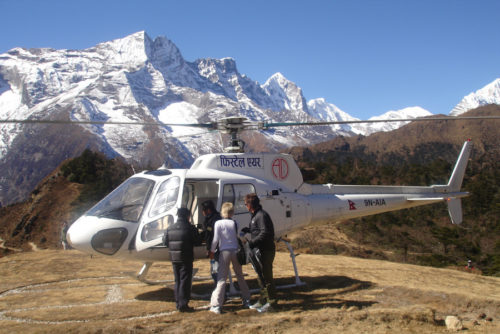
Trek Climb Ski Nepal has now been operating trekking, climbing and skiing expeditions in the Nepal Himalaya for over 10 years. Many of our guides and trip leaders have worked in this industry for in excess of 25 years.
We attach very little luck to the fact that during our 10 plus years in business, we’ve not experienced any major safety breaches or incidents while out in the mountains. No serious accidents or injuries. Not one. But yes to some occasional Acute Mountain Sickness (AMS). It is a fact that a very small percentage (around 5%) of the population is unable to acclimatise to altitudes greater than 3500 metres. In very simple terms, a small segment of the population – due largely to genetics – are physically unable to acclimatise to moderate to high altitudes. Unfortunately, no amount of training, fitness or adherence to sound acclimatisation protocols will assist.
#noshortcuts
Trek Climb Ski Nepal have in place very strict altitude acclimatisation guidelines and protocols. All of our trips conducted at altitudes above 3500m reflect this in their conservative itineraries. It is a fact that all our trips include a very gradual rate of ascent with plenty of rest and contingency days. Add to this lots of healthy food (as much as the client can eat!) and fluids and you have the foundation for a well-rounded and successful acclimatisation schedule.
Even with industry best acclimatisation protocols in place, AMS can still strike. When this happens, the response is time-critical. How the team you are travelling with recognise, respond and deal with the early symptoms of AMS might be the difference between life or death. We regularly observe mild AMS related symptoms in our guests while out in the mountains. These may take the form of mild headaches, loss of appetite or mild nausea. These symptoms are quite normal and in the very vast majority of cases are quickly and effectively treated. Rarely if ever will these symptoms cause a person to need to interrupt their trekking or climbing itinerary.
A real life incident and outcome
Very occasionally, AMS will present in such a way that demands a professional and immediate response. In October 2010, we were leading a trek to Everest Base Camp when a female guest of ours began experiencing considerable difficulty. Our team attended to her throughout the night and she was medivac’d to Kathmandu via helicopter early the following morning. The lady concerned was kind enough to send us this letter below.